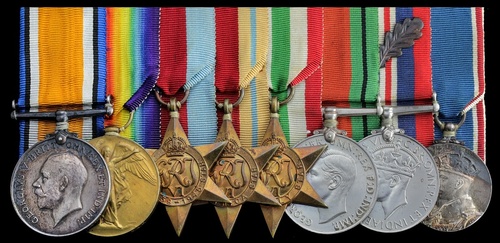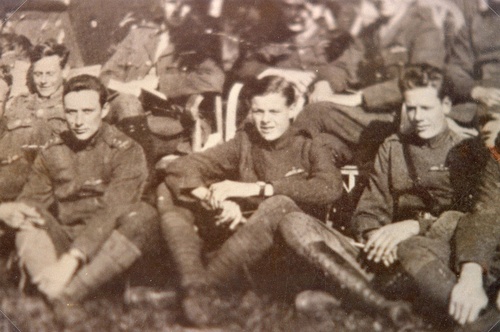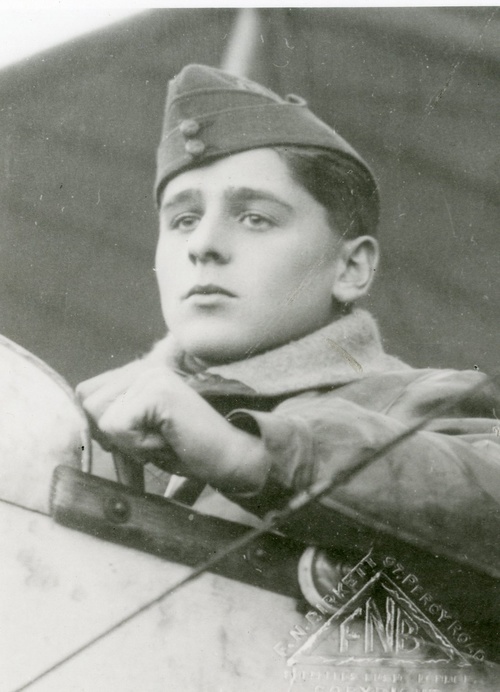Auction: 18001 - Orders, Decorations and Medals
Lot: 8
A good Great War and Second World War campaign group of eight awarded to Instructor Commander E. R. Trendell, Royal Navy, late Royal Flying Corps and Royal Air Force
Having claimed a brace of 'kills' as a Sopwith Camel pilot in No. 73 Squadron in the summer of 1918, he transferred to the Royal Navy and won a "mention" for the Anzio landings in 1944
British War and Victory Medals (Lieut. E. R. Trendell, R.A.F.); 1939-45 Star; Africa Star; Italy Star; Defence and War Medals 1939-45, M.I.D. oak leaf; Coronation 1937, mounted court-style as worn, minor official correction to surname on the first, good very fine (8)
Edward Roy Trendell was born at Oving, Kent in November 1898 and was educated at Boughton School, Faversham. Appointed 2nd Lieutenant in the Royal Flying Corps in September 1917, he qualified for his 'Wings' in a Grahame-White Biplane at Hendon in the following month (Aviator's Certificate No. 5368).
A brace of 'kills'
Shortly afterwards posted to No. 94 Squadron, a newly formed unit that was 'working up' in the U.K., he went operational himself in April 1918, when he joined No. 73 Squadron, a Sopwith Camel unit, out in France. He remained likewise employed until being admitted to No. 14 Canadian Hospital that November, possibly as a result of wounds. Be that as it may, he had clearly flown with distinction in the intervening months, an early success being an enemy 2-seater reconnaissance aircraft claimed during a line patrol on 16 June 1918, and "shared" with fellow 73 pilot, and fighter ace, Captain (afterwards Air Vice-Marshal) G. A. H. Pidcock:
'While on patrol at 10,000 feet, six miles north of Compiegne, I saw a 2-seater under French A.A. fire. I dived, followed by Lieutenant Trendell, and caught up the enemy aircraft at 5,000 feet, firing 500 rounds at 150 yards. Lieutenant Trendell also fired 150 rounds at the same range. By this time we were at 2,000 feet, and saw the enemy aircraft continue his dive into a clearing in the wood south of Thiescourt, where he crashed. This machine was also seen to crash by Lieutenant Graham.'
On 29 August 1918, in an offensive patrol N.E. of Arras, Trendell's guns again found their mark on a Fokker Biplane:
'Whilst on offensive patrol with Lieutenant Lussier, we were attacked by a formation of ten enemy aircraft. One of these, after diving at me, overshot, and I fired three short bursts of 200 rounds into the enemy aircraft at point-blank range, with the result that the enemy aircraft half-rolled, and went down on its back completely out of control.'
As stated above, he was admitted to No. 14 Canadian Hospital in November 1918, and was evacuated to the U.K. a few days later, where he was placed on the Unemployed List in April 1919.
Senior Service
Having then studied Physics at Oxford, Trendell was commissioned as an Instructor Lieutenant in the Royal Navy in April 1923 and served in a similar capacity for the remainder of his career. He was on the Professorial Staff teaching Meteorology at Greenwich, besides enjoying a number of seagoing appointments between the wars, among them time in the aircraft carrier H.M.S. Courageous 1937-38, when he was awarded the Coronation Medal (the official roll refers).
An Instructor Commander by the renewal of hostilities, Trendell held appointments in Daedalus at Lee-on-Solent and in Cormorant in Gibraltar 1939-42, following which he joined the staff of Admiral 'ABC' Cunningham at Algeria in early 1943. And it was for his services in this latter capacity - largely as a Meteorological Officer - that he was mentioned in despatches for Operation "Shingle", the Allied landings at Anzio in January 1944 (London Gazette 6 June 1944, refers).
Trendell was placed on the Retired List in September 1950; sold with copied combat reports and detailed research.
Subject to 20% VAT on Buyer’s Premium. For more information please view Terms and Conditions for Buyers.
Sold for
£550









